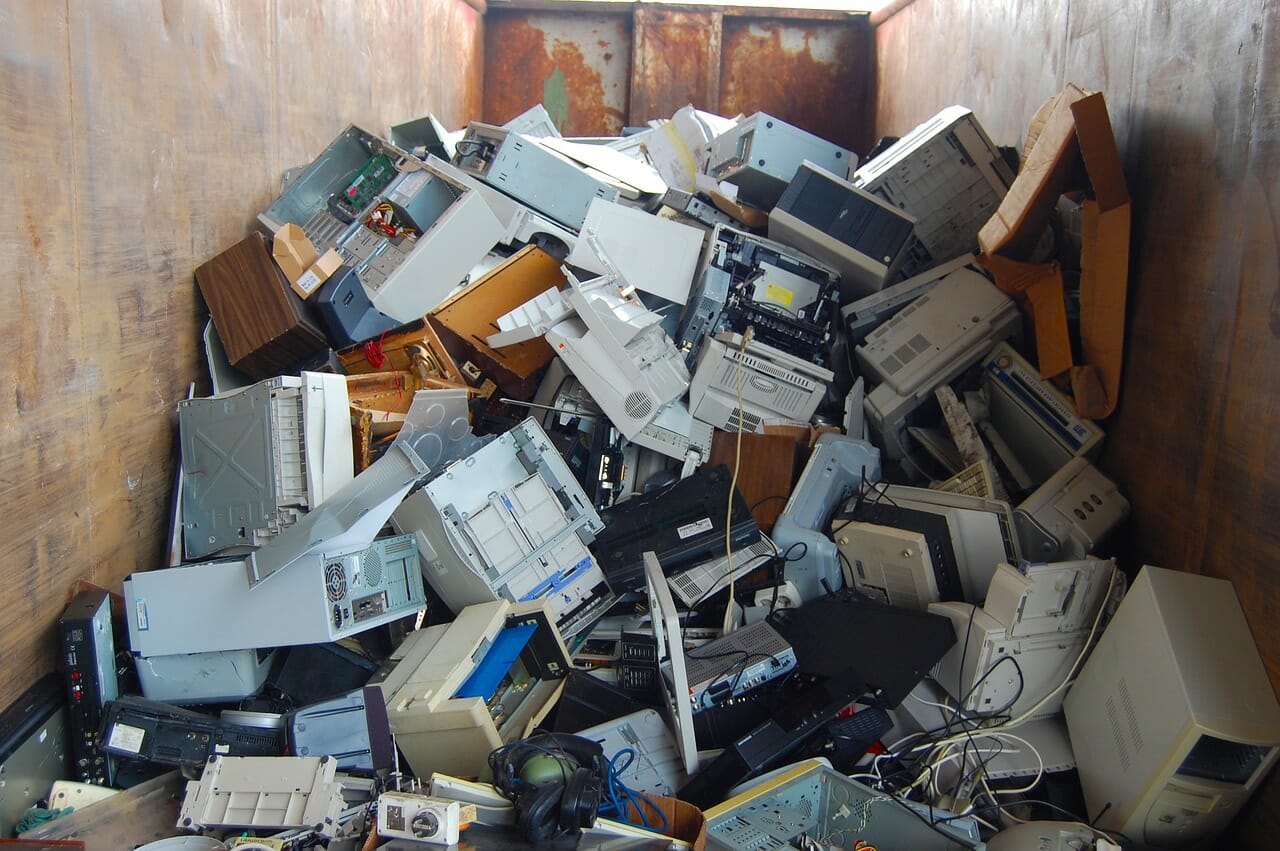As technology moves forward, electronic waste, or e-waste becomes a more prominent issue. The EPA recommends businesses use “certified recyclers” to manage such waste.
On their website, two organizations with programs for certification are present — Basel Action Network (BAN), proponents of the e-stewards program; and Sustainable Electronics Recycling International (SERI), proponents of the R2 program. Representatives from both organizations have shared their insights on e-waste, how to properly dispose of it, and what will happen if companies neglect to properly recycle their old electronics.
LEARN MORE: 17 inventions that haven’t been invented yet (that people want)
Jim Puckett, chief executive and founder of BAN, says “mountains” of e-waste are created every year by businesses, in part due to businesses mass-issuing devices to their employees, which tend to get replaced by other mass-issued devices later down the line. “Every employee in a normal business setting has a company computer, oftentimes a company mobile phone,” Puckett says, “and these need to be refreshed every two or three years.”

Puckett says another major contributor to e-waste is the Internet of Things (IoT.) IoT is a standard in modern tech creation that involves devices connecting to the internet or another communication network. Puckett believes that the process of connecting every device to a network creates an unprecedented amount of potential e-waste and at present there is little concern for how to properly recycle or dispose of it.
Puckett’s IoT concerns extend beyond the creation of e-waste. “With the advent of IoT, even more hardware is being generated,” Puckett says, “and the effects of this are twofold.” Puckett elaborates that one issue is an enormous amount of resource usage, noting that some commonly used resources in the IoT era such as copper could run out without careful stewarding. Puckett’s second concern is that IoT-compatible products have a tendency to be hazardous to the environment.
Puckett believes a solution to many of these issues would be to turn the tech industry into more of a service-based industry rather than a product-based one so tech organizations could be held accountable for the inclusion of potentially harmful products in the materials they create.
As a key member of BAN, Puckett recollects that part of the motivation behind creating the e-stewards standard is that even with the environmental laws in place, a lot of e-waste is not dealt with it is just sent outside of the U.S., which is technically legal despite being harmful to those in places that receive the waste. BAN’s standards disallow simply exporting waste. To this end, BAN has partnered with recyclers and businesses that will treat e-waste properly rather than simply moving outside of U.S. jurisdiction. While Puckett wishes the states would deal with the solution of waste management by way of recycling and reusing materials, he believes profit incentives without consequence motivate the current methods.
Jeff Seibert, chief provocateur of SERI, believes e-waste as traditionally defined is a misnomer. Usually, e-waste is viewed as waste created in the process of discarding a device. However, Seibert finds the typical business practice of not allowing devices to live their fullest life potential to be a major e-waste creator, even if the devices are not discarded.

“If a device is designed to last 7 years but is only used for 3 and then recycled, that creates e-waste, even if all the materials are captured for reuse,” he says. “And, since approximately 80% of the carbon footprint of electronics occurs through manufacturing and distribution, every additional device that is unnecessarily created also contributes to e-waste. Through that lens, businesses are contributing to e-waste in a variety of ways.”
Seibert is an advocate of manufacturing electronics with the intent of usage throughout the entirety of their projected lifespan. “Using devices longer, to their full potential, slows our need to manufacture a replacement having a positive impact on climate change,” Seibert says.
Seibert mentions both storage and damage as ways in which electronic devices can be commonly mishandled by businesses. He notes that damage can even be done deliberately by certain businesses, as handlers of a device with sensitive information will often choose to destroy it over the wiping process needed to remove the data. While this may seem like a simple and convenient move at the moment it is done, it is a net negative environmentally as it destroys what is in most cases a still usable device for the sake of erasing some of its data.
One solution Seibert mentions to deal with e-waste from still-usable electronics is to donate devices after the business no longer has use for them to those who would need them. “There are many people even in our own communities that don’t have access to new electronics,” Seibert says, “and if we do it right, electronics can find good second and even third lives after they no longer meet the needs of the business environment, helping people prosper along the way.” Many businesses destroy devices with sensitive data instead of sanitizing them, making them impossible to reuse.
In addition to donating devices, Seibert also feels companies can cut back on e-waste in many ways including purchasing devices that are designed more sustainably, using devices longer before upgrading, cascading devices within an organization, and choosing repair over replacement.
Seibert believes R2 helps people toward these ends by way of setting what he describes as the “best practices for the facilities that handle electronics for reuse and recycling, protecting data, the environment, communities, and the health and safety of workers who process these devices.”
Operating at an international level with more than 41 countries containing R2-certified facilities, SERI keeps expanding the program with a goal of zero e-waste in mind.
“SERI is continuing to expand responsible reuse and recycling options around the globe and our goal is for everyone everywhere to have convenient access to sustainable options for their old electronics,” he says.
Amongst the many R2-certified facilities, there are 25 present in Arizona.
Today, nearly every business uses electronics, which means at some point they will have to dispose of them, but businesses operating in line with an accredited program are much more likely to do so in a responsible manner.




